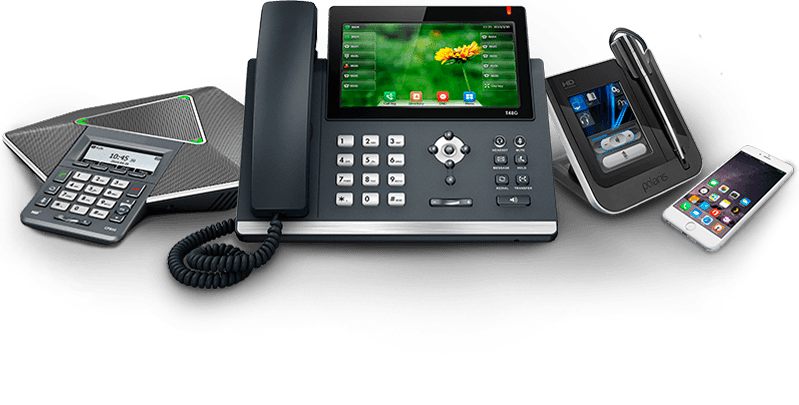For many businesses communication is a key part of everyday life. When it comes to being connected with customers the rise of Voice over Internet Protocol (VoIP) has been nothing short of revolutionary. Businesses, both large and small, now rely on the seamless transmission of voice data over the internet for their day-to-day operations. As we embrace the convenience of VoIP, the question on ever user’s mind remains: How secure is VoIP in an era where data breaches and cyber threats loom large?
In this blog we’ll navigate the potential risks, dissect the protective layers of encryption, and unveil the best practices recommended by Obedio to fortify your VoIP experience. Let’s delve into the world of secure communication together, where Obedio is your trusted companion on the path to safeguarding your conversations in the digital age.
Understanding VoIP Security Risks
Voice over Internet Protocol (VoIP) has undeniably transformed the way we communicate, offering a cost-effective and flexible alternative to traditional phone systems. However, as businesses and individuals embrace the convenience of VoIP, it’s crucial to be aware of the security risks that accompany this revolutionary technology. A survey in 2018 by HMRC said that 38% of small businesses had not established a clear protocol regarding cybersecurity threats. So it’s clear that this is something every business should be aware of.


1. Eavesdropping: The Silent Threat
One of the primary concerns in VoIP security is the risk of eavesdropping, where unauthorized parties can intercept and listen to your voice communications. Unlike traditional phone lines, VoIP calls traverse the internet, making them susceptible to interception. Without proper encryption, sensitive information exchanged during calls becomes vulnerable to prying ears.
2. Toll Fraud: Dialling into Financial Loss
Toll fraud is a persistent threat in the world of VoIP. Cybercriminals may exploit security weaknesses to gain unauthorized access to VoIP systems and place expensive international calls, leaving the account holder with hefty bills. Understanding and implementing robust authentication mechanisms is crucial in preventing such fraudulent activities.
3. Service Disruptions: Targeting Communication Reliability
VoIP services heavily rely on internet connectivity, and disruptions can occur due to various factors, such as network issues, Distributed Denial of Service (DDoS) attacks, or power outages. Service disruptions not only impact communication reliability but can also leave businesses paralysed if not adequately addressed. According to Darkreading, cybercriminals launched approximately 7.9 million Distributed Denial of Service (DDoS) attacks in the first half of 2023, representing a 31% year-over-year increase.
4. Identity Spoofing: Impersonating Legitimate Users
Identity spoofing involves impersonating legitimate users to gain unauthorized access to VoIP systems. Cybercriminals may use techniques like Caller ID spoofing to manipulate the display of phone numbers, tricking recipients into answering calls from seemingly trustworthy sources. Implementing strong authentication measures is essential to mitigate the risk of identity spoofing.
5. Phishing Attacks: Exploiting Human Vulnerabilities
Just like in other digital realms, VoIP systems are not immune to phishing attacks. This is the number one most common form of cyber crime with an estimated 3.4 billion spam emails sent every day and over 48% of emails sent in 2022 were spam(source). crimes, Cybercriminals may employ social engineering tactics to trick users into divulging sensitive information or gaining unauthorised access to VoIP accounts. Educating users about phishing risks and implementing email security measures are vital components of a comprehensive VoIP security strategy.
How VoIP uses Encryption to protect your data
What is data encryption? In the case of VoIP encryption transforms the spoken word into an indecipherable code during transmission, ensuring that even if intercepted, the content remains confidential. Protocols like Secure Real-Time Transport Protocol (SRTP) and Transport Layer Security (TLS) act as the gatekeepers of sensitive conversations, shielding them from unauthorized access.
Beyond confidentiality, encryption safeguards the integrity of voice data. By attaching cryptographic signatures to each packet, any unauthorized tampering becomes immediately evident. This ensures that the information exchanged in VoIP calls remains unaltered and trustworthy, contributing to a reliable and secure communication environment.
VoIP and SIP Authentication
Session Initiation Protocol (SIP) authentication is the sentinel at the gate of VoIP communication. By requiring users to verify their identity through secure credentials, SIP ensures that only authorized individuals or systems can initiate or receive calls. This mechanism acts as the first line of defense against unauthorised access attempts, setting the stage for secure and trusted conversations.
To fortify caller trustworthiness, the implementation of Multi-Factor Authentication (MFA) introduces an additional layer of security beyond passwords. By combining something the user knows (password) with something the user possesses (e.g., a mobile device for SMS verification or a biometric factor), MFA significantly raises the bar for unauthorised access, reducing the risk of compromised accounts.
Physical Protection of your VoIP systems
While the online side takes centre stage in of Voice over Internet Protocol (VoIP), the importance of physical security should not be underestimated. Protecting the tangible infrastructure that supports VoIP communication is an essential component of a comprehensive security strategy.
Securing Server Locations: The physical location of VoIP servers is a critical element in ensuring the security of communication infrastructure. Whether hosted on-premises or in data centers, these servers should be housed in secure environments with restricted access. Implementing access controls, surveillance systems, and environmental monitoring safeguards the servers that form the backbone of VoIP services.
Access Controls and Restricted Entry: Physical access controls are paramount in preventing unauthorised entry to areas housing VoIP equipment. Restricted entry points, biometric authentication, and electronic key card systems add layers of security to communication hubs. By limiting physical access, businesses can mitigate the risk of tampering, theft, or unauthorized modifications to VoIP hardware.
Redundancy and Disaster Recovery Planning: Physical security extends beyond preventing unauthorised access; it includes preparing for unforeseen events. Redundancy measures, such as backup power supplies and geographically dispersed server locations, contribute to the resilience of VoIP systems. In the face of natural disasters or other physical threats, having a robust disaster recovery plan is essential to maintaining continuous communication.


The Role of Updates and Patching for VoIP security
In the ever-evolving landscape of cybersecurity, staying one step ahead of potential threats is a continuous endeavor. For Voice over Internet Protocol (VoIP) systems, the role of updates and patching emerges as a proactive strategy to fortify your communication fortress. Here, we explore the significance of regular updates and patching in maintaining the security and reliability of VoIP infrastructure.
Closing Vulnerabilities: The digital landscape is rife with individuals and entities seeking to exploit vulnerabilities in software and hardware. Regular updates and patches act as virtual sentinels, closing the loopholes that could be exploited by malicious actors. By staying current with the latest security updates, businesses and individuals actively mitigate the risk of falling victim to known vulnerabilities.
Protecting Against Exploits and Malware: Cyber threats are dynamic, and attackers are relentless in their pursuit of new tactics. Regular updates fortify VoIP systems against emerging exploits and malware strains. By promptly applying patches, users ensure that their communication infrastructure remains resilient to the latest threats, reducing the likelihood of unauthorized access, data breaches, and service disruptions.
Navigating the Secure Horizon of VoIP Systems
In the ever-evolving landscape of communication technology, the question of how secure VoIP systems truly are is both complex and nuanced. As we’ve explored the multifaceted layers of VoIP security, it becomes clear that the resilience of these systems is not a static state but a dynamic pursuit—one that requires continual vigilance, adaptation, and a comprehensive approach.
The incorporation of robust encryption protocols stands as a formidable guardian, ensuring the confidentiality and integrity of voice data in the digital realm. Authentication mechanisms act as sentinels, allowing only trusted entities to access and utilize VoIP services. Physical security measures, often overlooked, fortify the tangible infrastructure that supports seamless communication.
Regular updates and patching, akin to a virtual immune system, actively respond to the ever-changing threat landscape, closing vulnerabilities and bolstering the defense against emerging risks. Network security, quality of service considerations, and adherence to regulatory standards collectively contribute to the holistic security posture of VoIP systems.
Yet, amidst the technological fortifications, the human factor remains pivotal. Employee training, fostering a culture of security awareness, and a commitment to compliance are integral elements in the ongoing quest for secure VoIP communication.
As we navigate the secure horizon of VoIP systems, Obedio underscores the importance of a proactive and layered security strategy. By embracing encryption, authentication, physical security, regular updates, and user education, businesses and individuals can cultivate an environment where the advantages of VoIP are harnessed without compromising on security.

